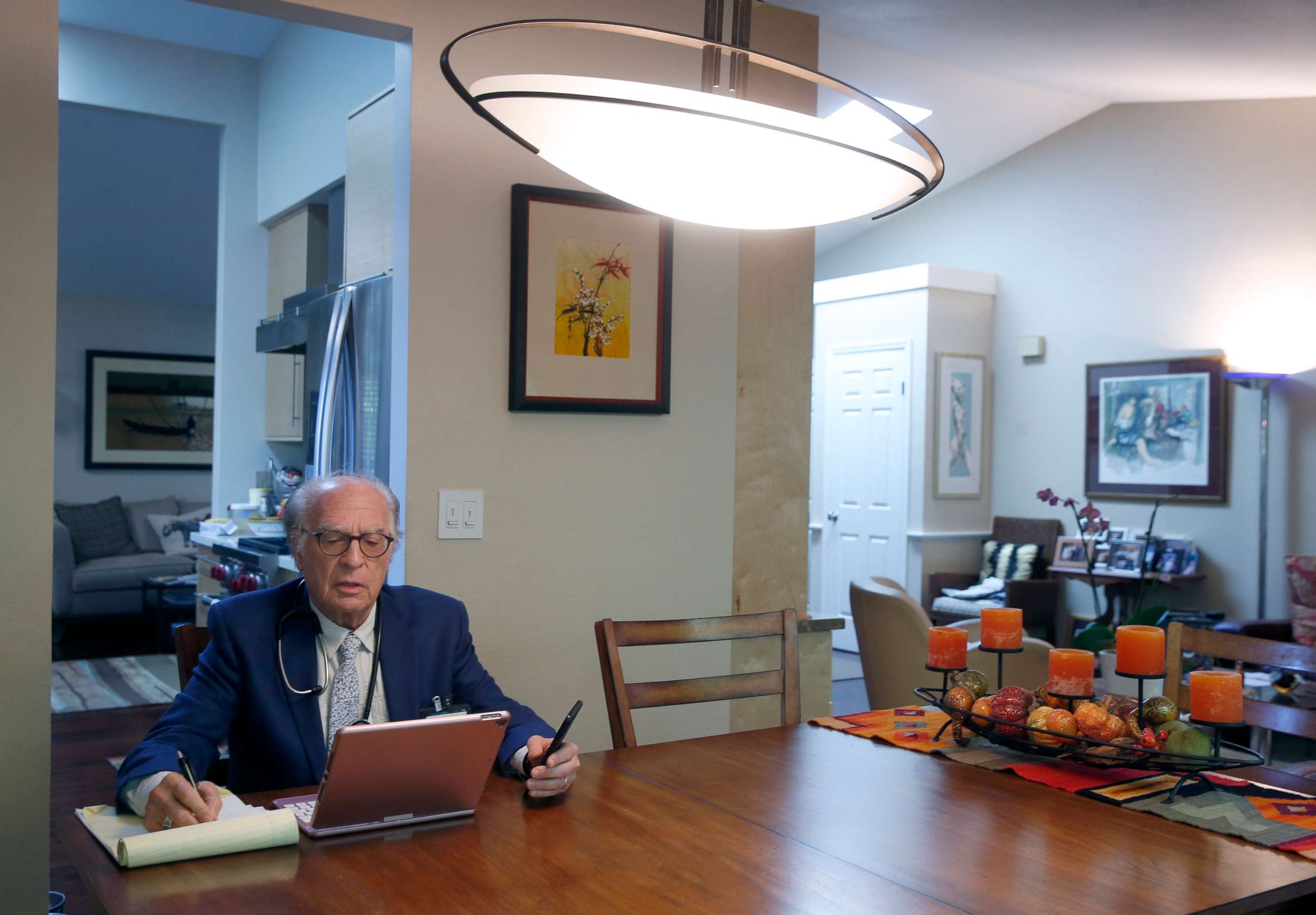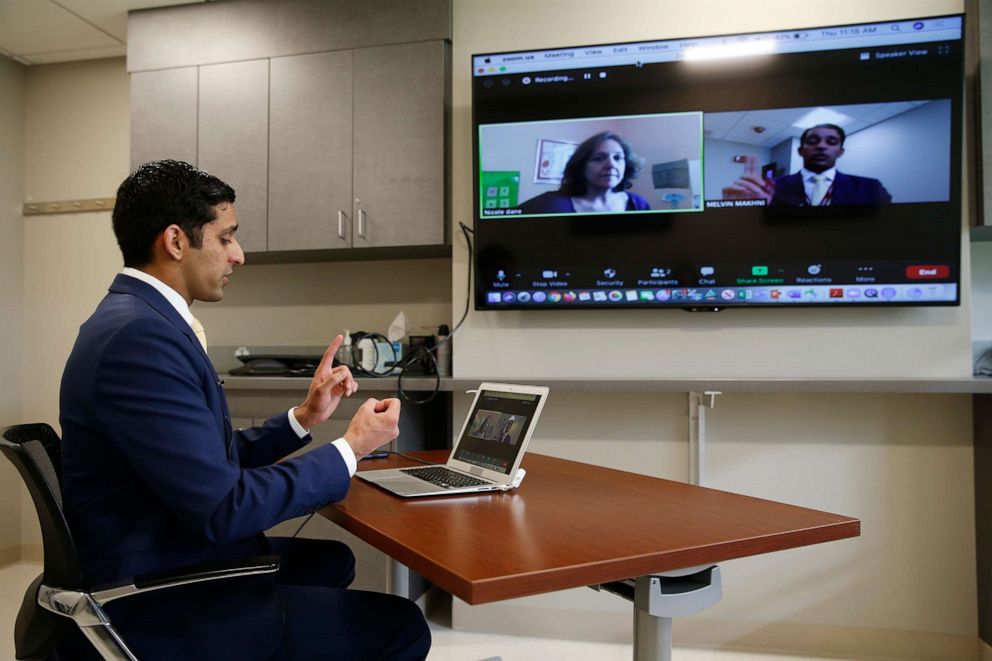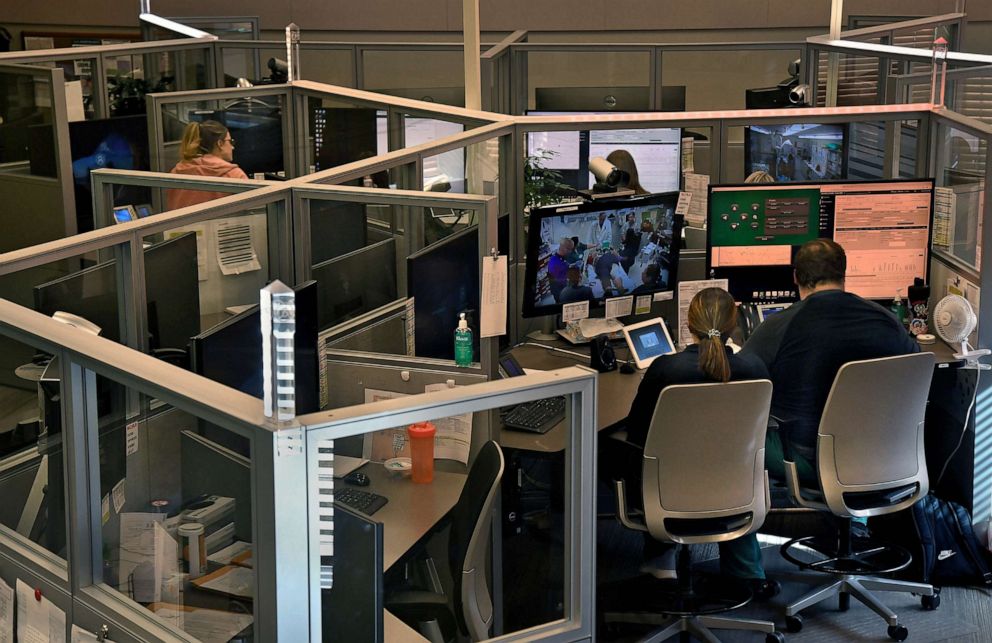Uptick in psychiatric illness during pandemic spurs telemedicine revolution
Health systems are working toward meeting this rising demand.
Even as the COVID-19 pandemic shows signs of subsiding in the U.S., more people are seeking outpatient and emergency psychiatric treatment -- and for many it's harder to find because of virus-related closures and a growing physician shortage.
Now, doctors and health systems like the New York State Office of Mental Health are implementing solutions, including telehealth and opening more clinics, to address the root causes of both the burgeoning mental illness crisis and a lack of access and providers.
From August 2020 to February 2021, the number of adults reporting symptoms of anxiety and depression, according to the Centers for Disease Control and Prevention, rose to 41.5% from 36.4% as reported unmet mental health needs increased to 11.7% from 9.2%.

Dr. Angela Coombs, a New York-based psychiatrist, said she's seen this firsthand.
"The number that I saw the greatest increase in was my private practice," she said. "A number of people were seeking out psychotherapy and medication management treatment."
What Coombs observed matched state trends. In New York, the number of monthly Medicaid outpatient clinic claims increased 22% from February to December 2020, as reported by OMH. However, the total number of patients at these clinics increased by only 5%.
According to Coombs, the flexibility to practice telemedicine helped many patients stay engaged in care, with data from New York indicating existing patients had more frequent clinic visits and fewer cancellations.

"The main reason outpatient visits increased so dramatically last year was due to the increased use of telehealth," said Dr. Thomas Smith, chief medical officer at OMH. "To ensure that individuals receiving mental health services were able to access treatment safely during the COVID-19 pandemic, OMH issued a regulatory waiver to allow all providers to use telehealth services. ... As a result, access to care was largely uninterrupted."
Telehealth claims from licensed OMH clinics went from 35% of claims in March 2020 to 90% of claims in April 2020 and have remained high. To date, OMH has approved 1,182 sites to continue using telehealth after the emergency order expires.
"This will ensure increased access to outpatient mental health services," Smith added.
But telehealth alone can't meet the rising demand for psychiatric services. While 23 mental health clinics and outpatient programs have closed in New York since March 2020, with seven of these being consolidations, there's been a concerted effort to ensure services are available to meet rising demand. Since that same time, six clinics have reopened under a new sponsor in addition to 160 new clinics.

The use of emergency and inpatient psychiatric services declined at the onset of the pandemic, but demand now is rapidly increasing.
At the beginning of the pandemic, people avoided emergency departments, and the number of hospital admissions for non-COVID-19 illnesses decreased. In New York, the number of monthly Medicaid inpatient claims for mental health conditions decreased 9% from February to October 2020, according to OMH data.
"You had that period of March and April 2020 where there was a mild dip because people were afraid of hospitals and there were more shutdown orders. But then things got back to where we were used to kind of seeing them in May and June," said Dr. Tony Thrasher, medical director for the Milwaukee County Crisis Services and president of the American Association for Emergency Psychiatry.

A study of one large academic medical center published in JAMA found that pediatric emergency department visits decreased from April to December 2020 but the proportion of visits for mental health conditions increased from 4.0% to 5.7%. The same study showed that among the children visiting emergency departments for mental health conditions, about 10% more required admission to the hospital and the average length of stay increased by about 3 1/2 days.
"People with even a more chronic course, that chronicity is showing breakthrough symptoms that are no longer easily tolerated or mitigated by their previous coping mechanisms, so you are just seeing individuals really needing a higher degree of involvement, longer treatments, longer time in the ER, longer intervention with medications," Thrasher explained.
Waiting times at facilities could increase further in certain regions because some inpatient psychiatric units have closed. New York has 5,814 OMH-licensed psychiatric beds in 100 hospitals, in addition to inpatient beds at 23 OMH psychiatric centers. During the peak of the pandemic, 871 of the OMH-licensed beds were repurposed for COVID-related medical use and 444 of those have returned to active psychiatric use. It's expected they'll all be reconverted to psychiatric beds.

New York's inpatient occupancy rate through the last week of May was about 85%, Smith said.
"Beds that had been repurposed for COVID-related medical use are returning to psychiatric use," he added, "and there are sufficient beds in the state's mental health system to ensure that people will get the services they need."
And for many, that's telemedicine.
Adjoa Smalls-Mantey, M.D., D.Phil., trained in immunology and a psychiatrist in New York City, is a contributor to the ABC News Medical Unit.




